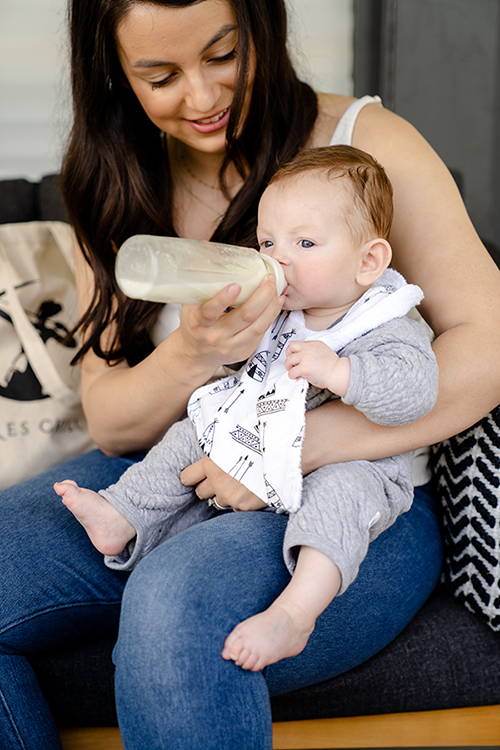
By Alanna Iacovetti
Until your return to work after your baby arrives, you may not have noticed any significant changes in your breast milk storage experience. Now that you’re pumping at work and building a breast milk stash, you store your milk in the fridge—only to discover an odd odor the next day. The smell might be soapy, metallic, fishy, or sour, making you think it has gone bad. After some research, you find out that you may have high lipase breast milk—a reality for many breastfeeding moms.
What Is High Lipase Milk?
Lipase is an enzyme naturally found in breast milk. It plays a critical role in digestion, protects against intestinal infections, and provides antibacterial and antiviral effects. However, when lipase levels are unusually high, the enzyme breaks down milk fats faster than usual, altering the taste and smell. This change happens at different rates for every mom—sometimes in just a few hours, sometimes over days.
Having high lipase milk doesn’t mean your breast milk is bad! It’s still safe and nutritious for your baby, but some babies might reject it due to the taste. If this is a struggle in your breastfeeding journey, don’t worry—Ceres Chill can help!
The “Old Way” of Scalding High Lipase Milk
Before Ceres Chill, scalding breast milk to neutralize lipase was a hassle. If you were away from home, it was nearly impossible—leaving the stovetop method as your only option. The process was time-consuming, required multiple steps, and resulted in extra dishes at the end of an already exhausting day.
The Ceres Chill Way: A Simple Solution
Scalding high lipase breast milk can be quick and easy with the right tools. A bottle warmer and your Ceres Chill breast milk chiller are all you need. Here’s how:
-
Pour your pumped breast milk into the inner chamber of your Ceres Chill.
-
Heat the milk to 180º F using a bottle warmer or stovetop, checking with a thermometer.
-
Prepare an ice bath in your Chiller’s outer chamber by filling it with ice cubes and water.
-
Immediately cool the milk by placing the heated inner chamber into the ice bath to preserve nutrients.
This method prevents milk from developing a strong taste or odor while making breast milk storage more convenient.
Scalding Breast Milk on the Go with Ceres Chill
If you need to scald milk at work or while traveling, Ceres Chill makes it possible! You’ll need two Chillers—one for heating and one for the ice bath.
-
Before leaving for work, fill one Chiller’s outer chamber with 180º F water and the other with ice and water.
-
After pumping, place your inner chamber into the heated Chiller and seal tightly.
-
Monitor the temperature with a thermometer until it reaches 180º F.
-
Quickly transfer the inner chamber to your second Chiller with ice water for rapid cooling.
-
Continue to pump, scald, and store milk throughout the day without worrying about spoilage.
By using Ceres Chill’s portable breast milk storage solution, moms can effectively scald high lipase milk anywhere, ensuring their baby gets the best nutrition without hassle.
What If Your Stored Breast Milk Already Tastes Off?
If your baby rejects stored milk, try these solutions before throwing it away:
-
Mix with freshly pumped breast milk to dilute the taste.
-
Add a drop of alcohol-free vanilla extract to improve flavor.
-
Combine with solid foods as your baby starts solids.
-
Use it for therapeutic breast milk soap instead of wasting it.
High lipase milk can be stressful, but with proper milk storage techniques and Ceres Chill’s portable solution, you can preserve your breast milk and keep feeding your baby with confidence.
Watch the Tutorial
Check out this awesome video for a tutorial on using your Chiller to scald milk:
More Breastfeeding Resources
With Ceres Chill, pumping moms can easily manage high lipase milk, making the journey simpler, less stressful, and more convenient—wherever life takes you.
